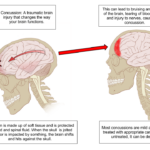Reducing the Risk of Knee Osteoarthritis After Injury: What You Need to Know
Knee osteoarthritis (OA) is a condition that affects the structures of the knee joint, often leading to pain, stiffness, and reduced mobility. Although commonly associated with aging, knee OA can also develop after a knee injury, a condition known as post-traumatic knee osteoarthritis (PTKOA). This guide outlines the nature of knee OA, the increased risk posed by knee injuries, and strategies to reduce that risk and promote long-term knee health.
Understanding Knee OA and PTKOA
Knee OA is characterized by gradual degenerative changes in the cartilage, bones, and other structures within the knee joint. It is particularly common among older adults, with many considering it a natural part of the aging process. However, for individuals who have sustained knee injuries, the risk of developing OA earlier in life increases significantly.
Post-traumatic knee osteoarthritis (PTKOA) refers to OA that develops following a knee injury, whether sudden (such as a ligament rupture) or gradual (due to repetitive stress). Research shows that individuals with a history of knee injury are up to 50% more likely to develop knee OA within 10 to 15 years, even if the injury was treated surgically. In particular, injuries involving intra-articular structures like the anterior cruciate ligament (ACL) or meniscus significantly raise the likelihood of early-onset OA.
Actions to Reduce the Risk of PTKOA
While it’s impossible to undo a past injury, there are proactive steps you can take to minimize the risk of developing PTKOA or to delay its onset. These measures focus on preventing further damage, strengthening the joint, maintaining activity, and managing weight effectively.
1. Prevent Further Injuries
One of the most critical aspects of reducing the risk of PTKOA is preventing subsequent knee injuries:
- Follow Expert Guidance: Work closely with healthcare practitioners, such as physiotherapists or orthopedic specialists, to implement a tailored recovery and prevention plan.
- Strengthen Key Muscles: Building strength in the quadriceps (front thigh muscles) and hamstrings (muscles at the back of the thigh) helps stabilize the knee joint, reducing stress and the likelihood of reinjury.
- Participate in Injury Prevention Programs: Programs designed for athletic populations often include dynamic, full-body movements and strengthening exercises. These are evidence-based approaches to lowering the risk of reinjury and ensuring long-term joint health.
2. Stay Physically Active
Remaining active is essential for maintaining joint mobility, muscle strength, and overall health:
- Set Long-Term Goals: Develop a sustainable exercise plan with your healthcare provider that takes into account your lifestyle, preferences, and any knee-related concerns.
- Address Pain Early: If you experience pain, swelling, or insecurity in your knee that affects your activity levels, seek professional help immediately. Early intervention can help address these issues before they lead to inactivity or worsening symptoms.
- Modify Activities as Needed: While staying active is important, it’s equally crucial to avoid activities that cause excessive strain on the injured knee.
3. Maintain a Healthy Weight
Body weight plays a significant role in knee health. Excess weight increases stress on the knee joint, accelerating cartilage degeneration and worsening OA symptoms:
- Achieve or Maintain a Healthy Weight: Work with a healthcare provider or nutritionist to develop a plan for weight management that aligns with your health goals.
- Adopt a Balanced Diet: Focus on consuming nutrient-dense foods, such as fruits, vegetables, whole grains, lean proteins, and healthy fats, to support overall health and joint function.
When to Seek Professional Help
It’s crucial to consult a healthcare practitioner if you experience persistent pain, reduced mobility, or find yourself limiting activities due to knee discomfort. A physiotherapist, for instance, can:
- Provide Early Intervention: Addressing symptoms early can prevent further joint damage and help you maintain an active lifestyle.
- Assist with Activity Modification: A physiotherapist can recommend adjustments to your daily routines and exercises to minimize strain on your knee while maintaining mobility.
- Design a Customized Treatment Plan: Therapy plans may include strengthening, stretching, and low-impact exercises tailored to your needs.
Symptomatic knee OA can interfere with basic daily activities like walking or climbing stairs, further reducing physical activity levels. Early management not only helps alleviate these symptoms but also slows the progression of OA, preserving knee function over time.
Key Reminders for Long-Term Knee Health
- Consistency is Key: Maintaining muscle strength, activity levels, and a healthy weight is easier than trying to regain them after they have been lost.
- Proactive Management Matters: Regular check-ins with healthcare providers and adherence to prescribed exercises and activities can significantly reduce the risk of developing PTKOA.
- It’s Never Too Late: Even if knee-related issues have persisted for years, it’s never too late to take steps toward improving your knee health. Early intervention is helpful, but starting at any stage can still yield benefits.
By focusing on injury prevention, maintaining an active lifestyle, and managing weight effectively, you can reduce the risk of developing knee OA after an injury. Collaborating with healthcare practitioners ensures you have the guidance and support needed to prioritize your long-term joint health. Protecting your knees today lays the foundation for a more active and fulfilling life in the future.






